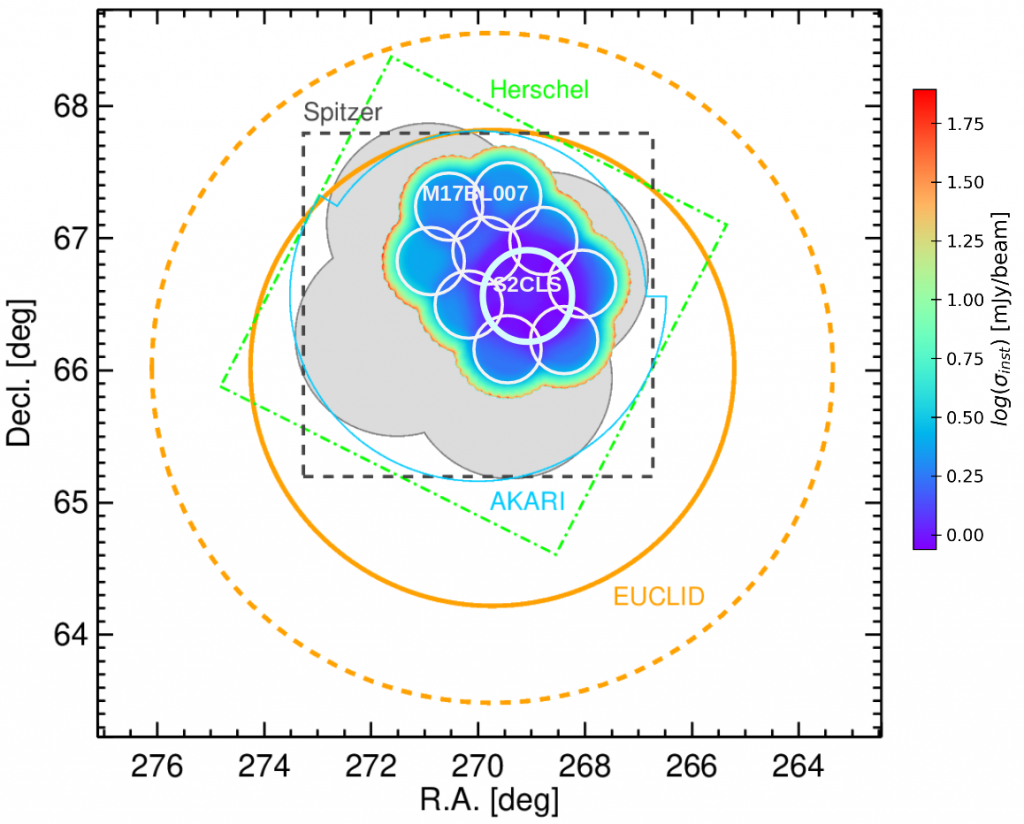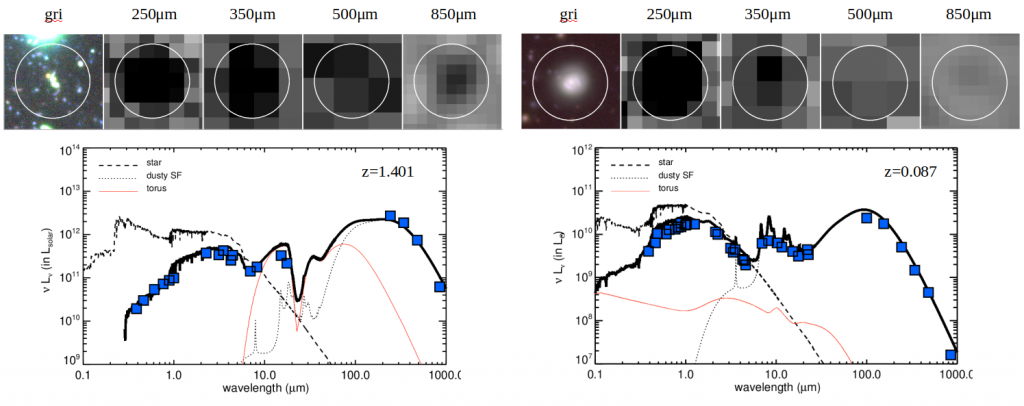NEPSC2: The SCUBA-2 850um Survey in the North Ecliptic Pole The north ecliptic pole (NEP) field will be a vital hub for near-future space telescopes. JWST, Euclid, SPHEREx, eROSITA, and SPICA – all these future space telescopes are planning deep fields in the NEP, due to its unmatched visibility from their orbits. The NEP will thus be central to the future of galaxy and black-hole evolution studies. Deep complementary far-IR/submillimeter survey would be essential to fully utilize the unique data sets that will be obtained in near future, such as deep X-ray images by eROSITA and deep near-IR grism spectroscopy by Euclid.
To prepare for the upcoming flood of space telescope data, we are executing survey that would complete the existing SCUBA-2 850 micron map of the 4deg2 area around the NEP, to a depth of sigmarms = 1.7 mJy/beam. In addition to the central 0.6 deg2 around the NEP mapped by the predecessor survey S2CLS, the new NEP 850 micron survey started from 2017 enlarged the mapping area as well as exploring to the deeper sensitivity. As of December 2019, the 4deg2 completion is ~50% complete in terms of the observing time.

Fig 1. The areal coverage of the existing and planned surveys in the NEP region compared to the coverage of the NEPSC2 survey as of December 2019. Shaded clover-shaped area represents Subaru HSC grizy imaging survey, cyan circle for AKARI NEP-wide, black square for Spitzer 3.6/4.5um, green square for Herschel SPIRE 250/350/500um. Starting from 2020, NEPSC2 survey plans to continuously cover the entire AKARI field of view (cyan) with 850um.
Once the survey is complete, we will be able to achieve the following key science goals:
- to characterize full SED from stellar, PAH emission and far-infrared dust emission for z < 1 dusty star-forming galaxies
- to investigate dust scaling relations at z > 1 as a function of metallicity
- to understand the co-evolution of AGN and galaxies by searching for rare obscured AGN and investigate their feedback to star formation. We expect huge (>1000) sample of submillimeter galaxies and a large field coverage that can be used in stacking analyses and large scale structure studies.

Fig 2. Two examples showing the role of 850um photometry in studying physical properties of galaxies. Left is an interacting galaxy system with best-fit photometric redshift of 1.4. Combining 850um photometry with previously obtained 250-500um fluxes, we can compare the contribution of the AGN and star formation to the total luminosity in this system. In the right, we see a member galaxy in the z = 0.087 NEP supercluster. This barred-spiral galaxy shows well-defined PAH emission at 6-12 micron as well as the cold dust radiation peaking at ~100 micron, which gives hints to the interstellar medium enrichment in galaxy evolution.
Coordinators: Hyunjin Shim (South Korea), Tomotsugu Goto (Taiwan), Stephen Serjeant (UK), Hideo Matsuhara (Japan), Haojing Yan (China), Douglas Scott (Canada)
– JCMT Project Code: M17BL007 & M20AL005


